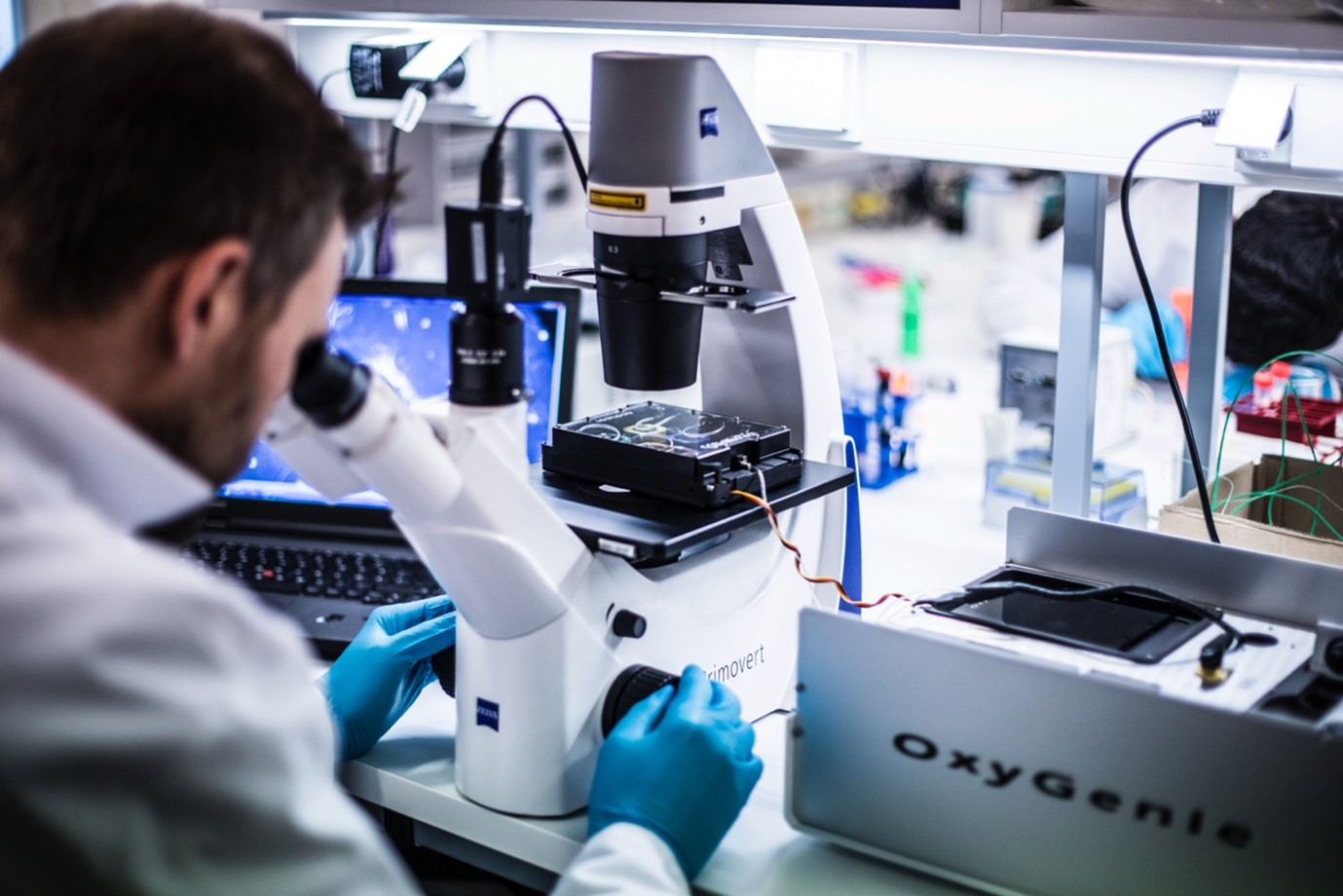Written: Oskari Kulta, Miina Björninen
Photo: Jonne Renvall (1), Esa Kreutzer (2), Jonne Renvall (3)
Challenge accepted
The ability to mimic the complex physiological conditions of the human body continues to be one of the leading challenges of the biomedical research. Already when moving the living engineered tissue models to the microscope from the incubator, the microenvironment within the culture system changes. The million-dollar question is how the cell culture conditions can be continuously controlled during handling. Joose Kreutzer, the CEO and founder of BioGenium, Microsystems Ltd., as well as an experienced researcher, accepted the challenge.
Long road, many projects
By combining Kreutzer’s knowledge in microfluidics, microfabrication, and organ-on-chip technology, the development of a novel all-in-one cell culture system begun. Even though Kreutzer founded his company as a spin-off from Prof. Pasi Kallio’s Micro- and nanosystems research group in 2018, the roots of the company date back all the way to Academy of Finland Stemfunc -project in 2008. “That is when the idea was born and first thoughts towards commercialization and patent application were obtained”, Kreutzer thinks back. “This was followed by Business Finland’s TUTLI project and MiniHypoxy project to promote the commercialization and develop the technology forward.” 10 years of hard work resulted in a portable cell culture device, OxyGenie™, where cells can be cultured and maintained in low oxygen (hypoxia) conditions. “And the possibility for easy imaging and user-friendly usage”, Kreutzer adds smiling. “It is the world’s first all-in-one cell culture package.”

Speak up!
Collaboration is the key to expand any business. Kreutzer highlights the importance of courageously speaking about one’s product and attending scientific conferences: “That’s how we found our current key collaborator, The Baker Company. It all started with a brief chat in a scientific conference and now Baker Company ensures that OxyGenie™ can be used all around the world.” Collaboration is also something Kreutzer wishes he would have thought more during his early career: “When I became an entrepreneur, I had to learn many things from the scratch: not only commercialization but also accounting, marketing, budgeting, insurances, and basically how to run a firm… With a dedicated team this would be much easier, and one does not alone need to do all the heavy lifting.”
Entrepreneur life
Even though Kreutzer embraces the freedom the academia offers, he always had an urge to expand his research further. That is why he did not want to become an employee in a firm or solely focus on research. “Already in the beginning, one should try to think how to commercialize the prototype/product that is under the research, consider the usability as well as the possibility to scale up the manufacturing. Too often in academia there is a great state-of-the-art system that is very expensive to mass-produce and is extremely hard to use. Additionally, recourses and time are always limited which again brings up the importance of collaborators and outsourcing”, Kreutzer reminds.

Next steps
When it comes to the company’s next steps, the aim is to find new customers and collaborators as well as establish even firmer sales. “CoEBoC has shown many great future applications for OxyGenie™ and related technology. Especially, utilizing the hiPSC technology to create disease models and drug screening platforms for replacing animal models excites me. It is a great deal of motivation to combine two research areas that are recently awarded with the Noble prize, as the work related to cellular hypoxia was awarded in 2019 and hiPSC technology in 2012”, Kreutzer sums up. Kreutzer also plans to continue his academic career. “The plan is to finish my doctoral thesis. Running the firm has taken most of my time and it has been waiting on my desk for quite a while, but I promise I will finish it”, Kreutzer laughs.
Access the webpage of BioGenium Microsystems Ltd. here.
This article is a part of the Research vs. Business series, where we interview experts from both worlds and try to understand how these worlds can act in synergy. Or can they?

